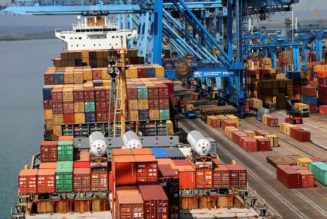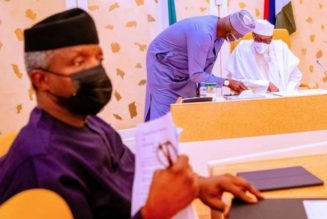Economy
How will the Treasury single account work?
Wednesday January 17 2024

The Central bank of Kenya, Nairobi. FILE PHOTO | DENNIS ONSONGO | NMG
On Monday, the Cabinet approved the implementation of the Treasury Single Account (TSA), setting the stage for a consolidation of government finances that are scattered across many bank accounts under the names of various agencies and ministries.
The TSA has been in the making for more than a decade, having been identified as one of the solutions to leakage of public resources, which makes it hard for the government to effectively run its budget plan.
Moving the bulk of government finances into a single account is bound to have implications for the ministries, departments and agencies (MDAs) and the banks that held Sh509.8 billion deposits from the national government and other public sector entities by June 2023, equivalent to 10.4 percent of the banking sector’s total deposits in the period.
Read: Auditor-General warns of theft risk in single paybill payments
What is a Treasury Single Account and how does it work?
A TSA is either one or a set of interlinked accounts that a government handles for the financial transactions of its MDAs.
The purpose of a TSA is to give a central authority, mainly the National Treasury, full visibility of public finances and control over these finances to improve the speed and transparency of budget execution.
In addition to efficiency in cash management, a TSA also cuts the administrative costs for the government by eliminating the fees and charges associated with running multiple banks accounts.
A TSA system generally follows two models. One is a centralised arrangement in which all transactions pass through a single account, normally maintained at the central bank.
The second is a hybrid arrangement in which MDAs are allowed to maintain their separate accounts, which are, however, linked to a central account and from which all funds must be transferred to the primary TSA account at the end of each day.
In September last year, the National Treasury’s director general in charge of accounting services and quality assurance Bernard Ndung’u told The EastAfrican newspaper that Kenya is pursuing the second model of TSA.
Read: MPs seek audit of parastatals’ excess cash
Kenya has been discussing this consolidation for a long time. What has delayed its implementation?
Kenya has been planning the shift to the TSA system for nearly a decade. The Treasury in the 2016 and 2017 Budget speeches made categorical promises to have the system operations within months.
These false starts are indicative of the amount of legal and regulatory legwork that is required to underpin a successful transition to the system.
It would also require investment in a system to interlink the various government agencies, oversight bodies and the National Treasury to allow for real-time payments between accounts.
In Kenya, this involves the automation of the exchequer process by interlinking the National Treasury, MDAs, Office of the Controller of Budget (CoB) and the Central Bank of Kenya (CBK) electronically.
The move also requires high level political backing, given the large volume of funds that MDAs control.
Will MDAs be forced to close down their many accounts under the TSA system?
Due to the preference for a hybrid system, MDAs will be allowed to retain their multiple bank accounts on condition that they don’t keep public funds in these accounts for more than 24 hours.
Read: How graft, weak systems cost counties Sh185 billion in taxes
They will also be required to pay suppliers and contractors within 24 hours of receipt of funds from the Exchequer to eliminate idle cash in bank accounts, a factor that will be key to addressing the challenge of accumulation of pending bills despite disbursements being made to line ministries by the Treasury.
Which entities are to be roped in under the system?
The objective of the TSA is to rope in all the MDAs that are funded via the exchequer.
It, however, excludes government enterprises which have operational independence, and in the initial phase, semi-autonomous government agencies (Sagas) that are allowed to budget and execute their own payment plans without the involvement of the parent ministry.
The Sagas, which include various roads authorities, Kenya National Examinations Council, and Higher Education Loans Board, will eventually be roped in once a review of their budgeting, legal and operational processes are done.
Is there an impact on banks that currently hold the MDAs accounts?
The eventual transfer of funds to the central TSA account from commercial banks is bound to have an impact on their liquidity, given that the MDAs are a key source of deposits for the lenders.
Banks will have to source for replacement funds elsewhere, which will come at a cost if they want to replace them with fixed, long-term deposits.
The Sh509.8 billion held by the national government and other public sector entities in commercial bank accounts was split between demand and time deposits at a ratio of Sh415.5 billion and Sh94.3 billion respectively.
Other than deposits, the lenders are facing up to losses of the transaction fees that they earn when processing payments on behalf of the government agencies and ministries.









